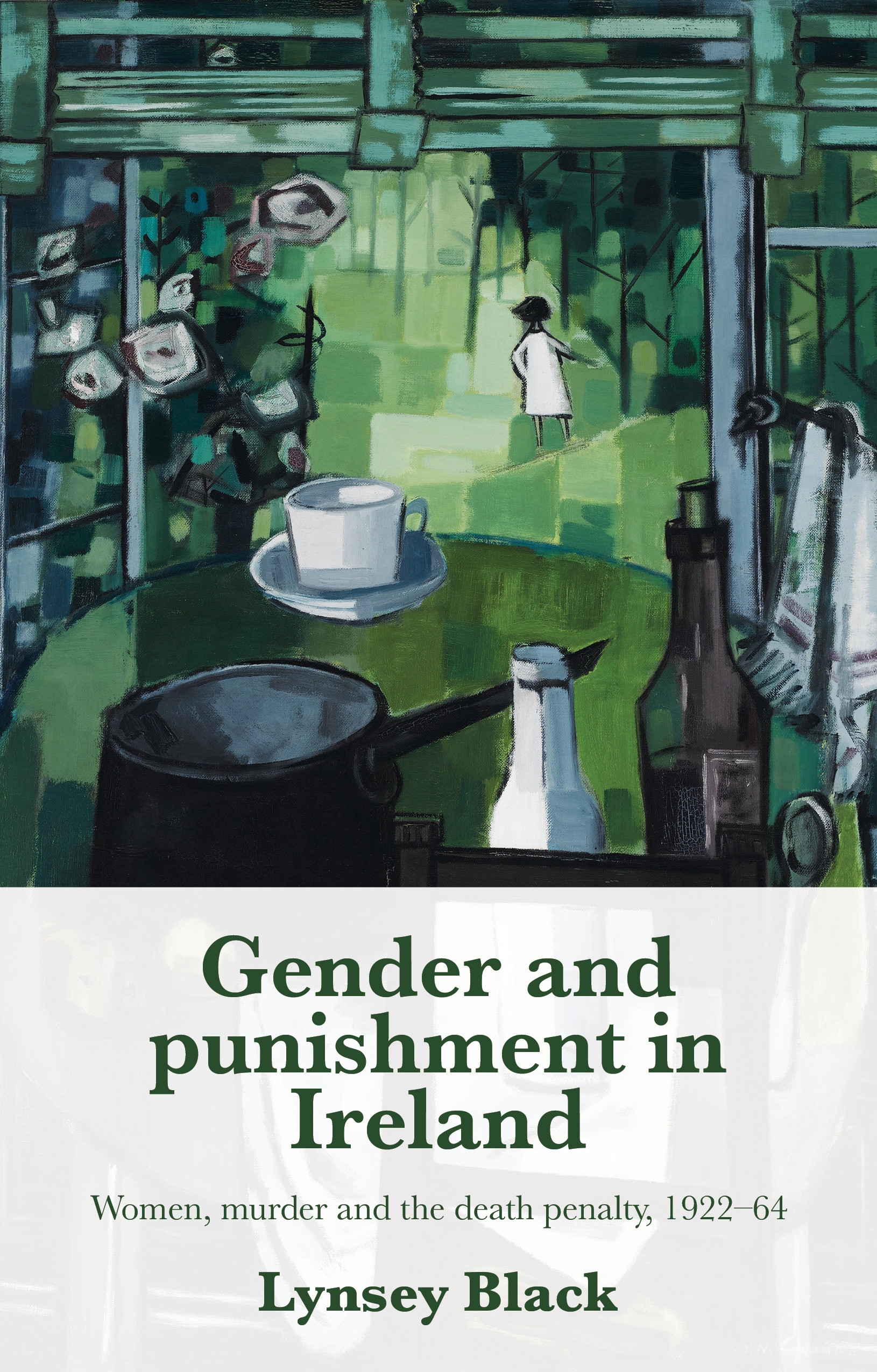Penal parsimony, paternalism and postcolonialism: Women and the death penalty in Ireland
Posted:
Time to read:
 Of what relevance could the Irish death penalty possibly be? As a punishment, it was abolished decades ago. The last man executed in Ireland, Michael Manning, was hanged in 1954. The last woman, Annie Walsh, met her fate in 1925. Yet this (fairly recent) penal history can speak to broader questions, which bring in themes of colonialism and postcolonialism, the pernicious legacy of empire, and what can come after. Ireland was inexorably shaped by its position, in varying guises, within the United Kingdom and the British Empire. Its post-independence death penalty regime reflected both the colonial imprint of British laws and institutions, as well as determined efforts to move away from the coloniser’s values. As we look at British imperial history with a more critical eye, one of the lenses we can use to explore this is the legacy of criminal justice frameworks and the lingering crimes and punishments left by centuries of colonialism. We know that global and historical forces work on the shape that punishment takes across nations and through time. In the case of twentieth century Ireland, these forces created a death penalty regime that was ostensibly moulded by concerns about political violence. This ‘general’ history is, by and large, a ‘masculinised’ history of the death penalty. Capital punishment in Ireland manifested in intensely gendered forms, as all punishments tend to do. For women, a different history emerges.
Of what relevance could the Irish death penalty possibly be? As a punishment, it was abolished decades ago. The last man executed in Ireland, Michael Manning, was hanged in 1954. The last woman, Annie Walsh, met her fate in 1925. Yet this (fairly recent) penal history can speak to broader questions, which bring in themes of colonialism and postcolonialism, the pernicious legacy of empire, and what can come after. Ireland was inexorably shaped by its position, in varying guises, within the United Kingdom and the British Empire. Its post-independence death penalty regime reflected both the colonial imprint of British laws and institutions, as well as determined efforts to move away from the coloniser’s values. As we look at British imperial history with a more critical eye, one of the lenses we can use to explore this is the legacy of criminal justice frameworks and the lingering crimes and punishments left by centuries of colonialism. We know that global and historical forces work on the shape that punishment takes across nations and through time. In the case of twentieth century Ireland, these forces created a death penalty regime that was ostensibly moulded by concerns about political violence. This ‘general’ history is, by and large, a ‘masculinised’ history of the death penalty. Capital punishment in Ireland manifested in intensely gendered forms, as all punishments tend to do. For women, a different history emerges.
First, a brief overview of independent Ireland’s capital punishment regime. Ireland inherited capital punishment on independence in 1922. While discussion was had about whether this punishment should be removed entirely, the new constitution was forged in a period of political violence which seemed to demand harsh justice. Although not generally considered within a history of the death penalty, its first amelioration, the Infanticide Act 1949, was applicable only to women. As a result of this reform, Ireland followed a path cleared by Britain by which women who killed their infants aged under 12 months could be prosecuted for infanticide rather than murder. The most significant reform of the death penalty in Ireland came with the Criminal Justice Act 1964, under which the offence of murder was divided into capital and non-capital murder, with only politically subversive killings to be captured by the ‘capital murder’ label. Yet by the time of this reform, Ireland had just achieved the status of being abolitionist ‘de facto’, as an execution had not been carried out for 10 years. Further, under this new dual classification, while some persons were death sentenced for capital murder, no one was executed. Finally, and somewhat late when considered against comparator nations, in the Criminal Justice Act 1990, Ireland completely abolished capital punishment, going on, in 2001, to vote in a referendum which removed all existing references to the death penalty and brought in a constitutional prohibition on its reintroduction.
In the collective imaginary, Ireland’s death penalty was associated with English oppression, and with deterrence against (male) Republican violence. These same motivations also underpinned the retention of capital punishment in the post-independence decades as successive Irish governments drew their weapons from the same toolkit wielded by London in earlier years. Yet beyond the narrative of male-perpetrated political violence, women were a significant minority of those sentenced to death post-independence. Taking Doyle and O’Donnell’s (2012) figures, of 90 persons sentenced to death from 1923 until reform of the death penalty in the Criminal Justice Act 1964, 68 of the condemned were men while 22 were women.
My recently published book, Gender and Punishment in Ireland: Women, Murder and the Death Penalty, 1922-64 (2022), takes these 22 women, convicted of murder and sentenced to death, as well as the more than 200 other women prosecuted for murder who were not capitally convicted, and explores the outlines of murder and punishment for women after independence until the 1964 reforms. The ‘headline’ of the research is that although almost two dozen women were convicted of murder and sentenced to death, only one was executed. In speaking of death, then, the book actually deals substantially with a lack of death, certainly a lack of judicial death.
As criminologists and scholars of punishment, we are often compelled to explain punitivism and penal excess. We should also be interested in the forces shaping penal parsimony. In the case of Ireland, why were so few women executed? Why were the sentences of all but one commuted to penal servitude for life?
One rationale is found in the profile of the killings. Of 22 condemned women, 12 had been convicted of infant murder. These 12 were the mothers of babies born outside of marriage, or the relatives of women in this position. The criminogenic shame of ‘illegitimacy’ in this period significantly shaped the profile of the condemned. Although Britain reformed its law on infant murder in 1922 and again in 1938, Ireland did not reform until 1949, ensuring that hundreds of women appeared before the courts on charges of murdering their recently born ‘illegitimate’ babies.
For these women, there was no expectation that they would be hanged. Even in cases which seemed to warrant harsher judgement, such as cases of repeat offenders, women had not been executed for this offence since the first half of the nineteenth century. Instead, the Irish criminal justice apparatus devised an ad hoc and informal system, by which such women would have their capital sentences swiftly commuted, and would spend approximately two years in prison before release.
This leaves 10 women who had been capitally sentenced for the murder of an adult, only one of whom, Annie Walsh, was executed. Walsh was hanged in Dublin’s Mountjoy Prison in August 1925 for the murder of her husband. What stayed the hand of government in the other nine cases? There were certainly cases which attracted very little sympathy, and which would seem to have been likely candidates for death. Yet, one of the overwhelming themes within the research is the idea of ‘mercy by gender’ – that women were reprieved from sentence of death for no other reason than their sex. This was made explicit through some of the internal department memoranda, and was present also in letters sent to the President and government from members of the public.
This paternalism, under which it was considered unseemly to hang a woman, saw its corollary in the heavy use of religious confinement for women. Punishment, of the nature that men experienced, in prisons or on the gallows, was viewed as unfitting for women. Instead, women more frequently found themselves transferred from prison to religious institutions such as convents or Magdalen laundries, institutions in which they could spend much longer periods of time, and in some cases, the rest of their lives.
The author of any book will always proclaim it a daunting task to sum up the work, but in this case, the legacies of colonialism and the new path forged post-independence certainly set the scene for the synopsis. The new Irish nation, born of violent struggle for independence, retained the death penalty that had existed under colonial rule. Yet Ireland’s reworking of its identity once independence had been achieved saw it cleave closely to the Catholic Church, and to a projected image of Irish purity, often defined in contrast to Britain. The coming to power of the confessional state reified gender roles which suggested a domestic and private sphere for women. Women were spared the punishments that men experienced. This paternalism was born of a deeply harmful conception of women as fundamentally ‘less than’ men in terms of personhood and citizenship. As Dario Melossi (2022) recently wrote, ‘within prisons we find only those who are free members of the social contract’.
In final conclusion, the above is, of course, not an argument for the ‘levelling up’ of women’s punishment to meet the severity of men’s experiences. As Anne Worrall wrote in her 2002 chapter ‘Rendering women punishable’, in the ‘drive for equivalence’, there has been a tendency to unmake women as a category worthy of special attention. Rather, the Irish case demonstrates the complex and gendered ways in which punishments take shape and suggests how these can be interpreted against the national context. Seeming penal parsimony was intertwined with the postcolonial moment, creating the conditions for a regime which removed many women from the state-operated criminal justice system to the control of religiously-run institutions.
 |
Dr Lynsey Black is Assistant Professor of Criminology in the School of Law and Criminology, Maynooth University. She is a co-editor of Law and Gender in Modern Ireland: Critique and Reform (Hart 2019, with Peter Dunne) and Histories of Punishment and Social Control in Ireland: Perspectives from a Periphery (Emerald 2022, with Louise Brangan and Deirdre Healy). In 2022, she published her first monograph, Gender and Punishment in Ireland: Women, Murder and the Death Penalty, 1922-64 (Manchester University Press). Her current research examines penal nationalism and the Northern Ireland border and is funded by an Irish Research Council Starting Laureate grant. |
Share:
